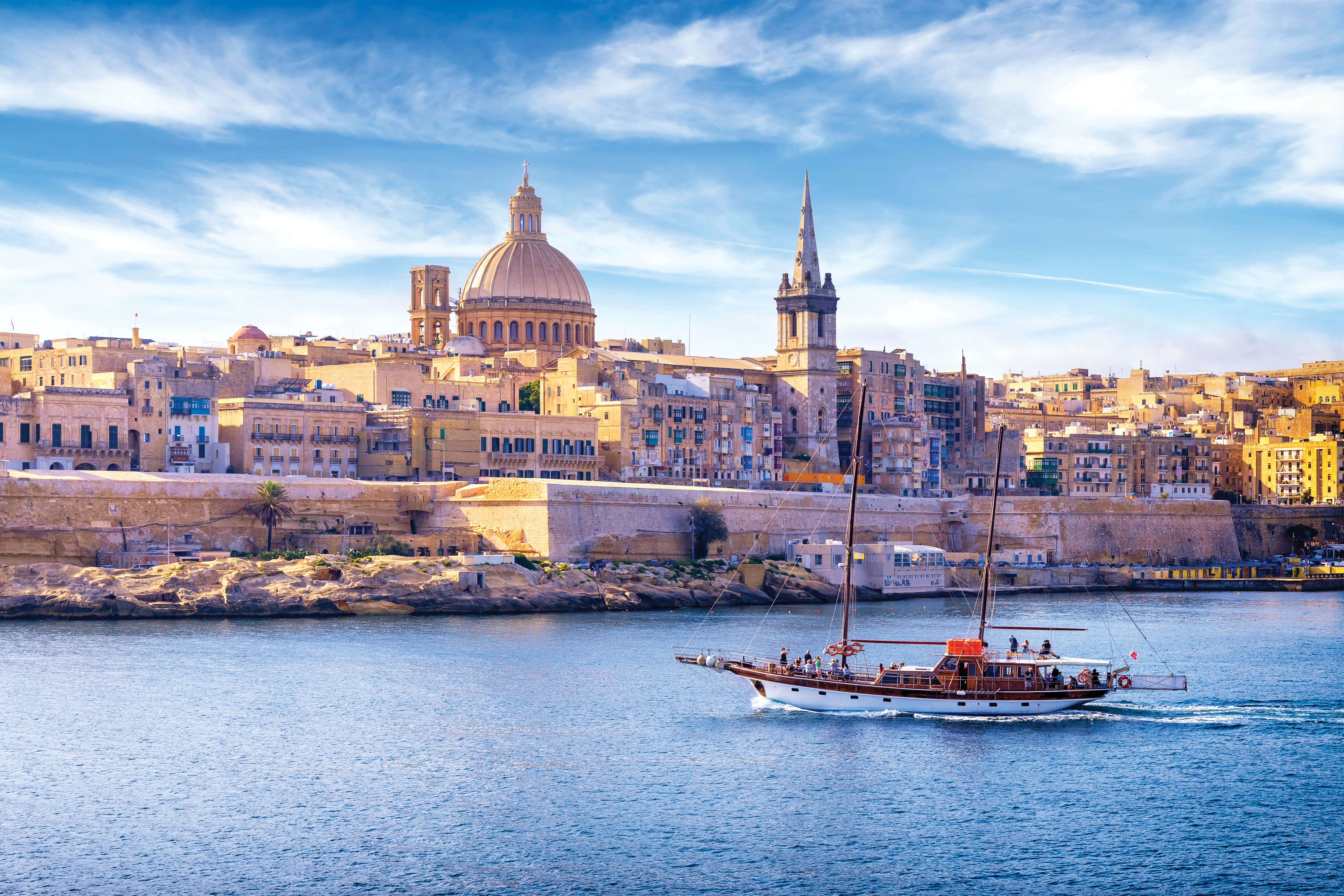
A SPECK OF AN ISLAND – actually a group of five – located in the Mediterranean Sea, 80 kilometres south of Sicily, Malta appears to be in the middle of nowhere but is easily accessible by a multitude of flights from Rome. On a June weekend, I arrive in advance of a cruise, eager to learn all about a country I know very little about. On the ground, I meet my tour guide, Eike, to learn about all things Maltese. My lesson starts with numbers: with 550,000 residents occupying just 320 square kilometres and seven thousand years of history, Malta is one of the oldest and most densely populated countries in Europe. The Phoenicians, Greeks, Romans, and Arabs all ruled here, but it was the arrival of the Order of the Knights of St. John in 1530 that enhanced the island republic’s fascinating history. The Knights were a religious brotherhood founded to care for pilgrims travelling to the Holy Land; however, Malta’s strategic location on the trade route made it appealing to invaders. The Knights had to take on a military and defensive role, which resulted in the island’s heavy fortification.
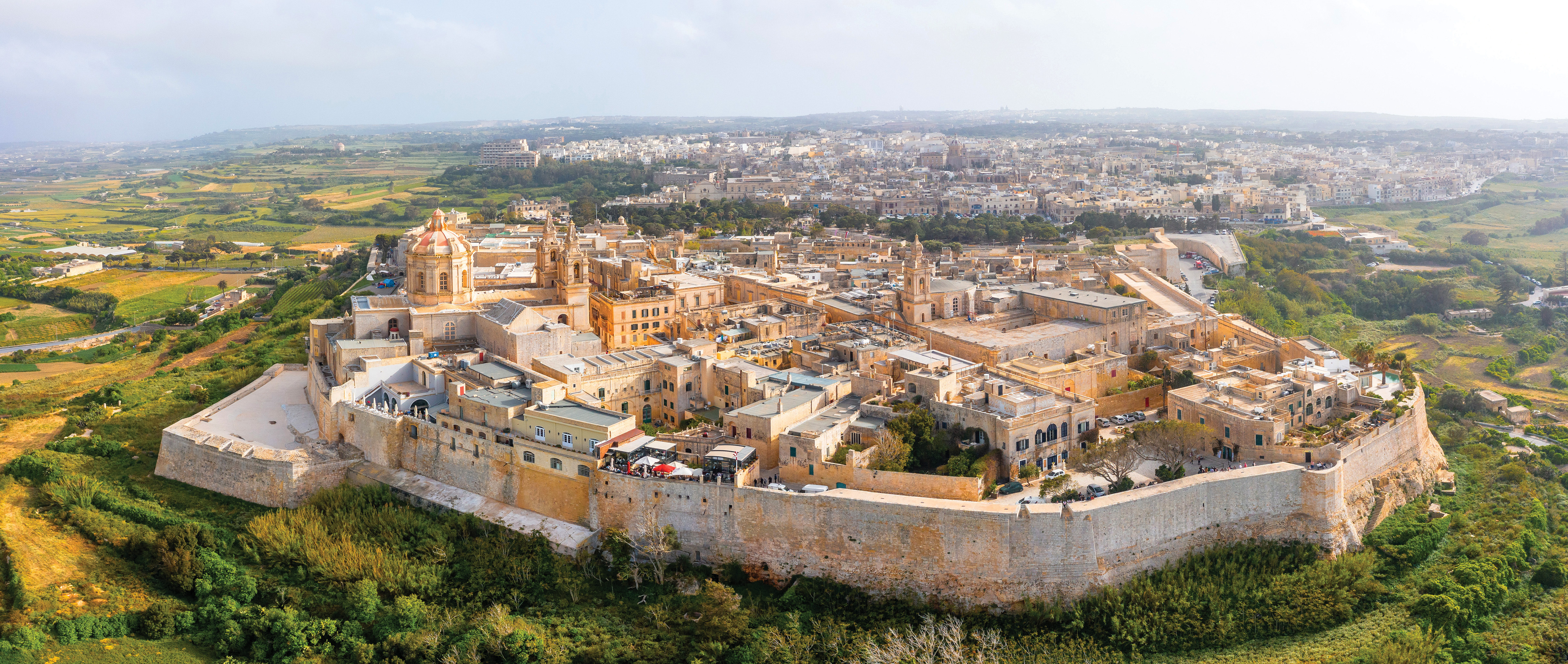
Malta has few natural resources, Eike says, but does have plenty of limestone. And with that, he points to the imposing Mdina rising out of the desert, the ancient capital of Malta, encircled by a wall of beige and yellow-tinted stone. Today, approximately 400 people still live inside these walls, and we wander through some of the charming narrow alleys. Except for cars owned by residents, no other vehicles are allowed here, one of the reasons for its nickname, “The Silent City.” We come upon the famous Blue Door, which Eike says, “It’s just a door,” somehow popularized by social media. Sure, it’s pale blue hue contrasts with the overhanging bright pink bougainvillea, but I’m much more impressed with others, some painted bright red, and others carved out of centuries-old wood.
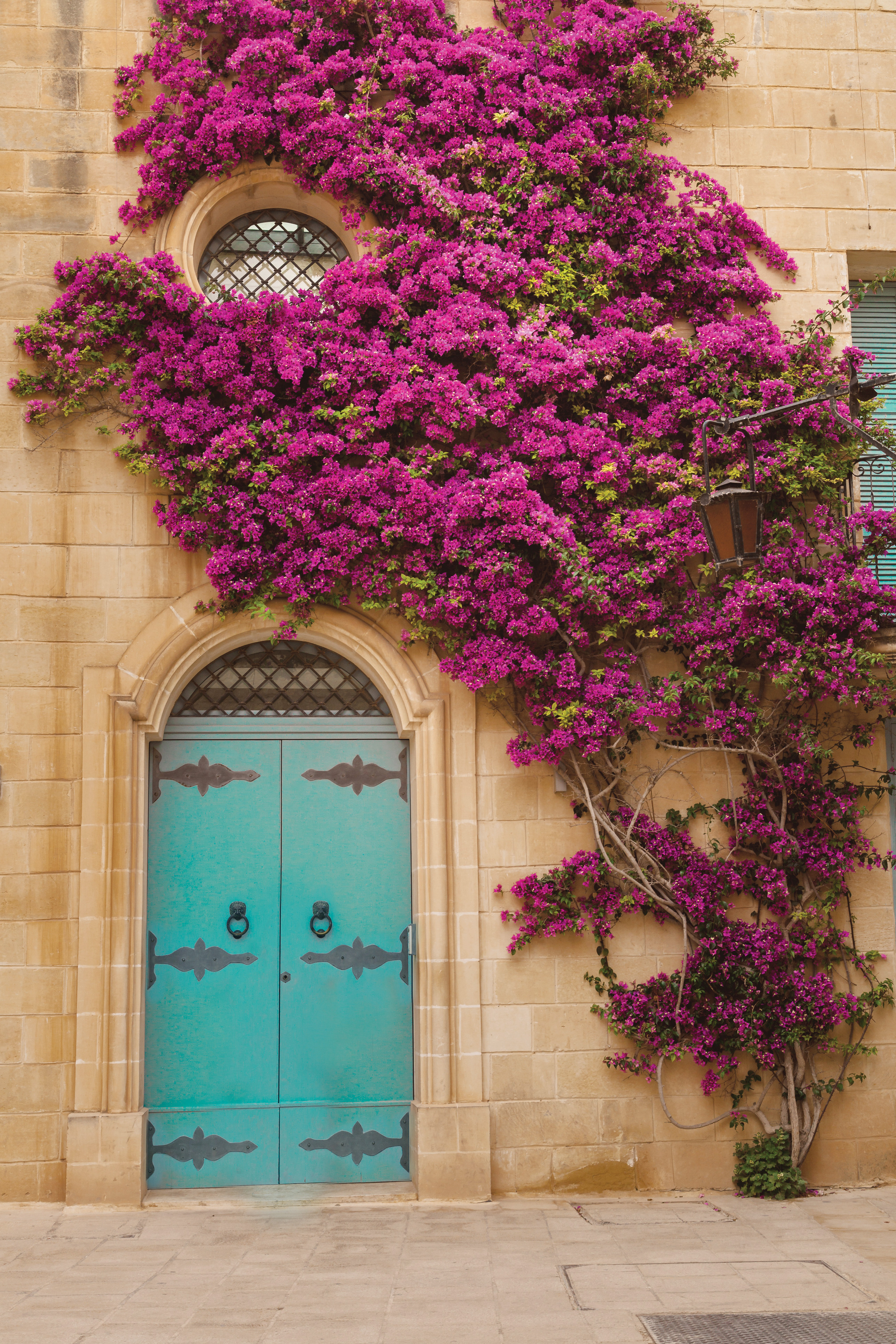
Our next stop is delightful Valletta – Malta’s capital city since 1571 and home to approximately 6,000 residents. Its unique claim to fame? The entire city has been designated as a UNESCO World Heritage Site. And I can easily see why. Standing at the main city gate,³the ever-present and massive limestone walls surround me. The Knights of St. John spared no effort or expense in adorning the city with Baroque architecture, grand palaces, and opulent churches. Eike takes me to St. John’s Co-Cathedral, constructed in 1577 and dedicated to St. John the Baptist. Not expecting much from its plain exterior, my jaw drops once I’m inside. Every inch drips with gilded carvings, and the vaulted ceiling is adorned with episodes from the life of St. John. But most interesting is the cathedral floor where each intricate inlaid marble tile is a tombstone of a member of the Order of the Knights of St John. In the oratory hangs The Beheading of St. John the Baptist, a canvas by Italian painter Caravaggio, which I immediately recognize from my art history studies. Painted in his signature chiaroscuro technique that employs high contrast of light and dark, Caravaggio perfectly captured the pain and anguish of the macabre scene.
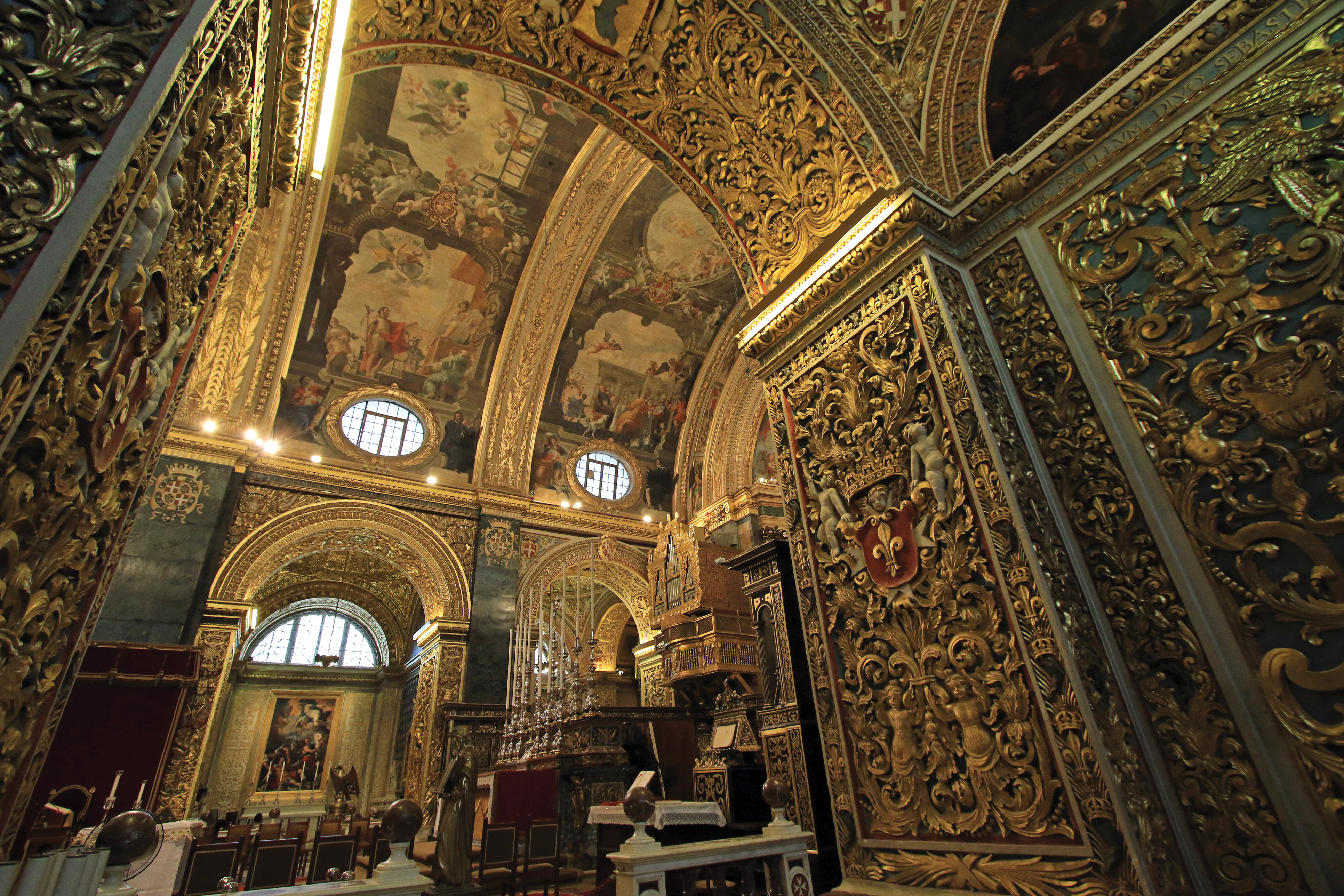
At the end of my tour, Eike leaves me to wander the Grand Master’s Palace. Built by the Knights of St John, the palace has been the seat of government for 450 years. Its impressive armoury is one of the largest in the world, showcasing the extraordinary cache of weapons the Knights wielded to defend Malta. My visit also coincides with the annual Malta International Arts Festival. Taking place inside the palace is “Voices of Valour”, a performance of 16thcentury celebratory hymns sung by KorMalta, the country’s national choir. But rather than being a static affair, the choir perform throughout the palace, and the audience follows. From the grand staircase to the breezy courtyard and the throne room, I’m mesmerized by the harmony, echoing off the palace’s richly decorated halls and ornate ceilings.
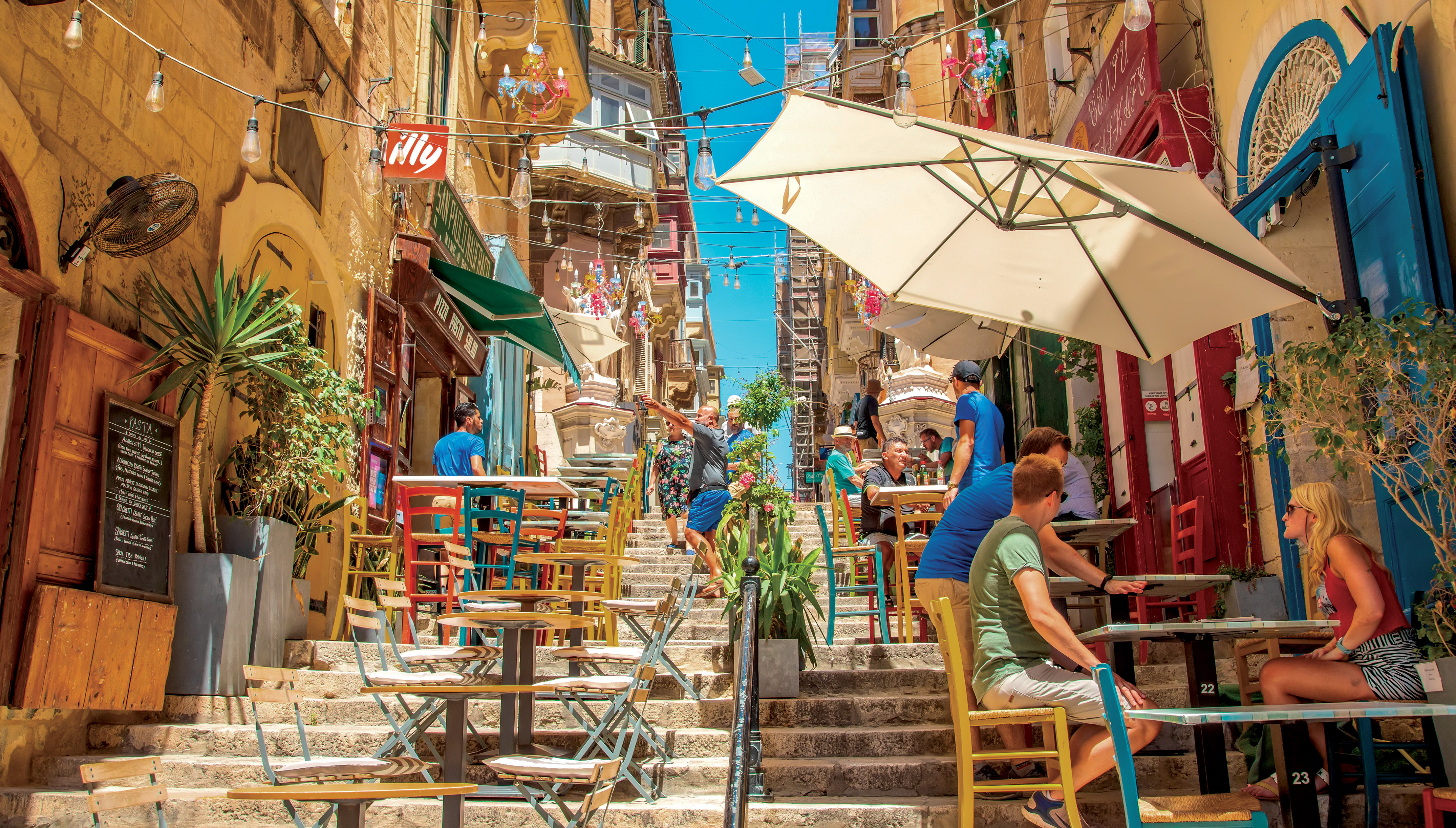
Leaving the palace, I cross the square to dine at Fifty Nine Republic, a trendy eatery listed on the Michelin Guide. For an island with so few natural resources, I’m astounded to learn that Malta still manages to deliver an award-winning gastronomical scene, including seven Michelin-starred restaurants. Naturally, locally-caught seafood reigns supreme here, but rabbit, sausage, and beef also appear on the menu, many cooked in Middle Eastern and Arabic flavours inherited from the country’s bygone rulers. Malta has so much more to offer, including worldclass diving, stunning beaches, and exciting sporting events, which certainly deserve a return visit. As my ship glides down the Grand Harbour towards the open ocean, I view Valletta for the last time from a different perspective, and the city’s formidable limestone walls look as impenetrable today as they did 500 years ago. As the fort’s massive cannons come into view, the message is loud and clear: Malta may be small, but it is indeed mighty.
Written by Ming Tappin for Cruise and Travel Lifestyles (Fall 2025)
Popular Articles & Videos
- Video: Meet the Wine Maker in the 'Tuscany of Austria' on the Danube
- You Need This Suitcase For Your Next Trip to Wine Country
- 3 New, Impossibly Picturesque Boutique Hotels That Make it Easy to Dream About Your Next Trip to Europe
- Cruising with History on Sea Cloud
- Video: Alaska Wildlife Encounters You Can't Miss






